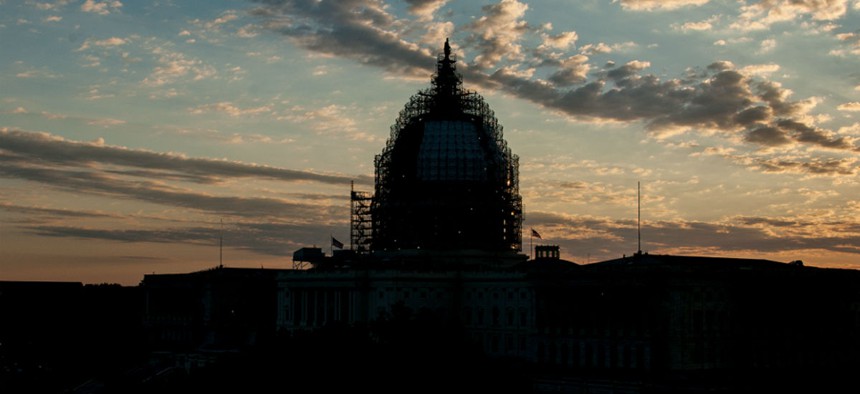
Architect of the Capitol
Abortion Has Held Up the Budget Before, But the Stakes Are Higher This Time
Debate over reproductive rights caused funding gaps in the 1970s, but not a shutdown.
A shutdown looms. Again.
Congress has only five days left to pass a budget before the end of the fiscal year, and federal funding for Planned Parenthood is creating an obstacle on the floor. On Tuesday, Senate Majority Leader Mitch McConnell introduced a temporary measure for government funding, with details to defund Planned Parenthood. This is expected to be voted on Thursday.
This wouldn’t be the first government shutdown or funding gap, and it wouldn’t be the first time that abortion has played a role. There have been 18 previous funding gaps, at least seven of which involved concerns over whether government programs—most prominently Medicaid—could fund abortions.
In 1977, there were three consecutive funding gaps ranging from eight to 12 days, all regarding Medicare potentially covering abortions. These funding gaps were informally dubbed Abortion Shutdown Part I, II, and III. A resolution was finally reached when the legislature included that Medicaid could pay for abortions where a mother’s health was concerned.
But things are different this time around with Planned Parenthood in the crosshairs.
)
Before 1980, federal agencies could still operate during funding gaps, no matter what was happening in Congress. So while Congress and the White House argued, government employees still went to work.
But in 1980, Attorney General Benjamin Civiletti issued an opinion ordering the heads of agencies to suspend “operations until the enactment of an appropriation,” making shutdowns a much more high-stakes risk. Therefore, several “shutdowns” that occurred from 1980 to 1995 were conducted over federal holidays or weekends in order to comply with that order and keep the government open.
The next shift came in in 1995, when lawmakers began pushing for shutdowns for larger ideological reasonings, bringing the federal government to a full halt. That came back into play in 2013, during a fight over the Affordable Care Act, and could happen again within a week.
If Congress doesn’t come to a budget agreement by Sept. 30, this will be the first Republican majority to bottleneck a budget bill due to reproductive rights. The last time Congress and the White House feuded over abortion funding, the President was a Democrat, and the House and the Senate both had Democratic majority.
Other issues that led to shutdowns and funding gaps include Congressional tiffs over public works, defense, education, foreign assistance, and the environment.
Congress has lots to do amid a historic visit and address from Pope Francis. The timing of the Planned Parenthood debate is a bit ironic, given Francis’s visit: While the Catholic Church is against abortion and contraception, the pontiff recently announced a “jubilee year” during which women may repent and be forgiven for terminating pregnancies.
The Washington Post has a full list of government shutdowns and funding gaps by date here, as well as a roundup of how they started and ended.






